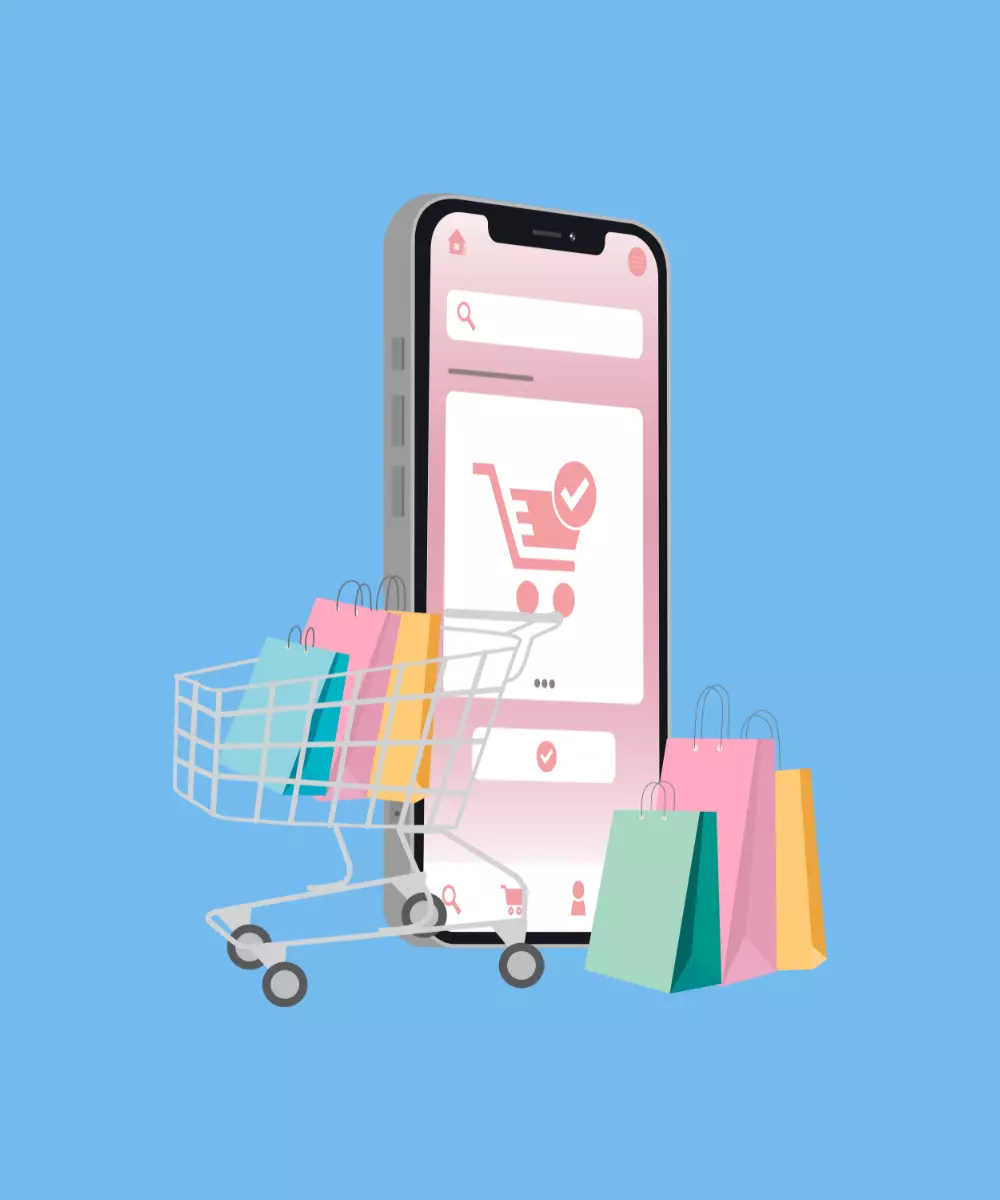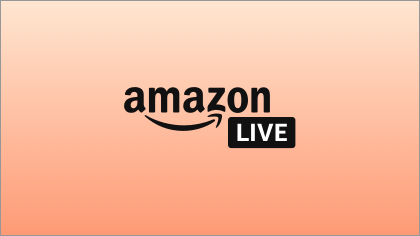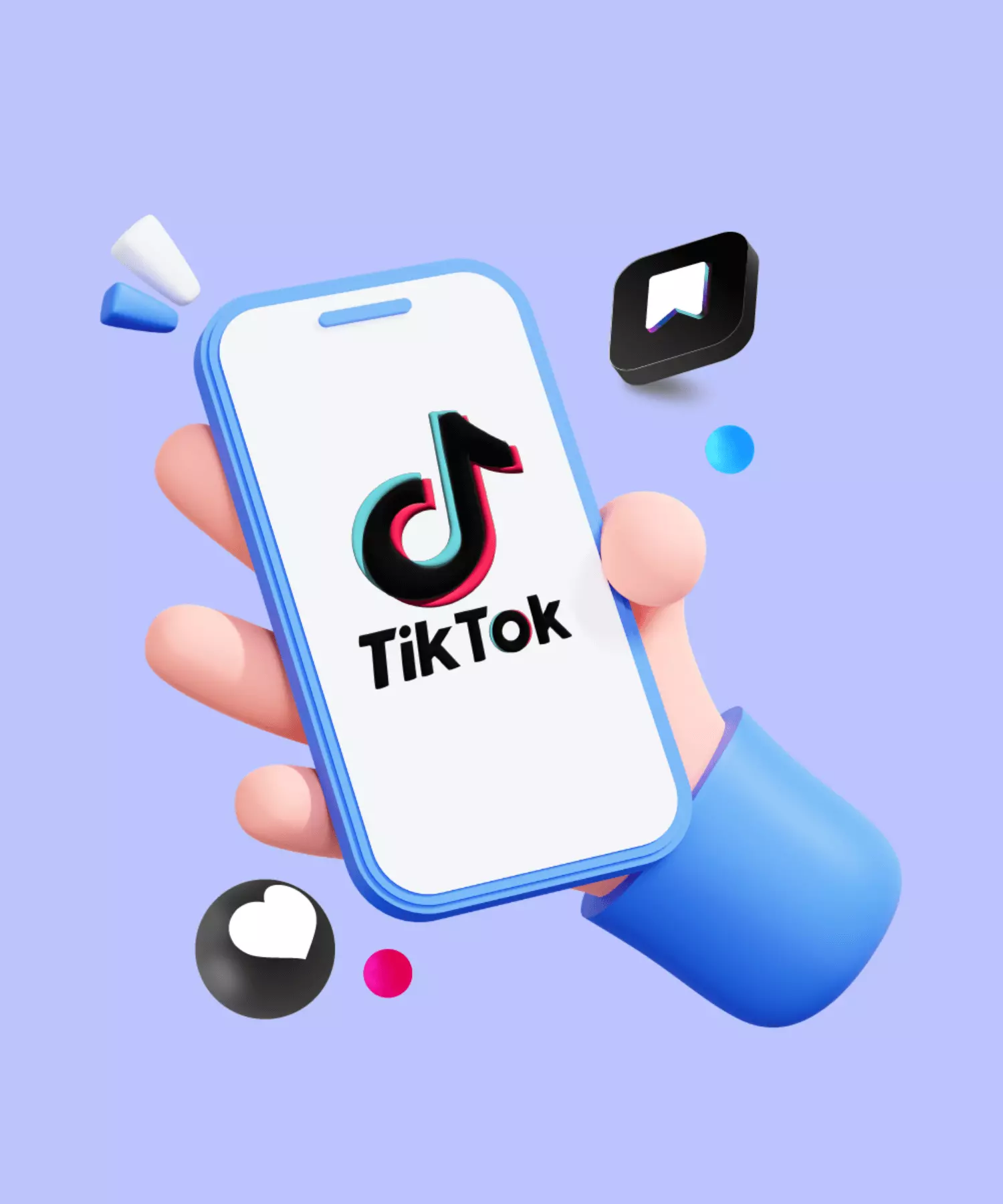In today's digital age, livestream shopping apps are revolutionizing the e-commerce landscape. Combining real-time interaction with online shopping, these platforms offer a unique blend of entertainment and commerce. Dive in as we explore the top players in this dynamic market and unveil the potential of livestream shopping.
Livestream Shopping App Market Overview
The convergence of technology, social media, and e-commerce has led to the rise of a groundbreaking trend in the retail sector: livestream shopping. As we journey deeper into the digital age, consumers are increasingly drawn to more immersive, engaging, and real-time experiences. Livestream shopping precisely taps into this desire, presenting a harmonious blend of entertainment and e-commerce.
Recent reports suggest that the global landscape of online shopping is undergoing a massive transformation. Livestream shopping, once an emerging trend, has now firmly rooted itself as a mainstream method of commerce. According to a study by Coresight Research, the US livestream shopping market alone could escalate to a staggering $25 billion by 2024. This surge has been particularly evident in Asian markets. For instance, China, a pioneer in this space, witnessed a livestream shopping market valuation of over $100 billion in 2023.
Moreover, the millennial and Gen Z populations, known for their affinity for digital innovations, have shown a notable inclination towards livestream shopping. Their penchant for authenticity, real-time interactions, and on-demand content makes this model especially appealing to these demographics.
What Is a Live Video Shopping App?
In an age where technology continually blurs the lines between the physical and virtual realms, a live video shopping app emerges as a paragon of this fusion. But what exactly does this term encapsulate?
A live video shopping app is a digital platform that encompasses the principles of e-commerce with the allure of live broadcasting. Imagine combining the interactivity of a live TV show with the convenience of online shopping — that's essentially what these apps offer.

Here's a deeper dive into its components:
- Live broadcasting: At its core, the app allows sellers, influencers, brand ambassadors, or even everyday enthusiasts to host live video sessions. Unlike pre-recorded advertisements or product listings, these are real-time broadcasts where hosts showcase products, demonstrate their use, and share personal experiences and reviews.
- Interactive engagement: These live sessions aren't just a one-way street. Viewers have the unique ability to interact directly with the host. They can pose questions about product specifications, sizes, user experience, or any other queries. This instantaneous feedback mechanism mirrors the experience of asking a salesperson questions in a physical store but with the added comfort of doing so from anywhere in the world.
- Integrated shopping features: What sets these apps apart from standard live streaming platforms is the e-commerce integration. As viewers watch the live session, they have the option to view product details, add items to their cart, and make purchases without having to leave the app. Some apps even feature pop-up overlays during the live stream, allowing users to tap and buy on the go.
- Personalized experience: These apps often employ data analytics and AI to tailor the live shopping experience for individual users. Based on browsing history, past purchases, and viewing patterns, users receive recommendations for live sessions they might be interested in, making their shopping experience more personalized and engaging.
- Social shopping: Beyond the commerce aspect, live video shopping apps also tap into the social nature of shopping. Viewers can share live sessions with friends, comment together, and even receive group discounts or deals. It's akin to shopping with friends at a mall but in a virtual environment.
Benefits of Live Shopping Apps
In recent times, the global live commerce landscape has witnessed an invigorating surge. Tech titans like Google, Pinterest, Twitter, and TikTok, alongside emerging startups, have all explored this burgeoning mode of selling. So, what's driving them towards this new frontier of shoppable video streaming? Here are the advantages they're capitalizing on:
- Boosted conversions: Live shopping has been a game-changer in driving sales. McKinsey highlights that live shopping events can generate conversion rates of 30%, a stark contrast to the 2.8% achieved by traditional e-commerce in the US during 2021. Factors like limited-time offers, flash sales, and the sheer excitement of the live event experience amplify impulsive purchasing tendencies. Features like one-click buying and integrated payment methods further streamline the process, reducing barriers to purchase and, in turn, ramping up conversion rates.
- Elevated brand image: Livestreaming offers brands a unique chance to rejuvenate their image. It allows direct, real-time dialogue with consumers, making businesses more accessible and relatable. This immediate connectivity fosters a closer bond between the brand and its audience, positioning the business as modern and responsive, especially among tech-savvy shoppers.
- Unfiltered authenticity: With livestream commerce, what you see is what you get. Consumers view products in their raw, unedited state. The absence of post-production enhancements means that what consumers receive matches what they saw live, positioning brands as transparent and consumer-centric. Given that a vast majority of shoppers prioritize brand authenticity, this is a massive win for businesses.
- Dynamic engagement: The allure of live shopping springs from its interactive nature. The ability for users to pose questions, give feedback, and engage in real-time keeps them anchored to the shopping experience, turning passive viewers into active participants.
- Shopping meets entertainment: Merging shopping with real-time entertainment transforms it into a multifaceted experience. This vibrant blend meets the desires of a significant portion of US consumers who crave unique shopping adventures. Additions like quizzes, challenges, and interactive unboxing sessions further gamify the process, making shopping both fun and engaging.
- All-encompassing interactions: Live shopping offers an experience that's more than just visual. Companies can craft multi-dimensional interactions that forge a deep emotional bond with consumers. Advanced technologies, like augmented reality (AR) and virtual reality (VR), take this a notch higher, offering immersive experiences that showcase products in a comprehensive, holistic manner.
Top Livestream Shopping Apps
The rapid ascent of livestream shopping has given birth to an array of platforms, each offering unique features and catering to diverse audiences. While the market is continuously evolving, several apps have managed to distinguish themselves by providing exceptional user experiences and garnering substantial user bases. Let's delve into some of the frontrunners in this realm:
The rapid emergence of livestream shopping has paved the way for various platforms, each offering unique features and experiences. Let’s delve into some of the top players in the market:
Taobao Live:

- Overview: A giant in China's e-commerce sector, Taobao Live is Alibaba Group's flagship livestream shopping platform.
- Features: Real-time interaction, comprehensive product demos, and collaboration with top influencers.
- Market presence: Predominantly in China, with efforts to expand to other Asian markets.
Amazon Live:

- Overview: Riding on the massive success of Amazon, Amazon Live is the retail behemoth's foray into livestream shopping.
- Features: Integration with the existing Amazon shopping cart, instant purchasing, and an array of established brands and influencers.
- Market presence: Global, with a significant footprint in North America and Europe.
ShopShops:

- Overview: A global shopping platform that connects Western brands with Chinese consumers through livestream events.
- Features: Interactive sessions, language translation, and a curated selection of global products.
- Market presence: Strong in China with growing awareness in the U.S.
NTWRK:

- Overview: Often dubbed "QVC for Gen Z," NTWRK offers shoppable shows featuring celebrities and top brands.
- Features: Exclusive product launches, celebrity appearances, and a mobile-first approach.
- Market presence: Predominantly in the U.S., targeting the younger generation.
TikTok:

- Overview: While primarily a short-form video platform, TikTok has ventured into livestream shopping, leveraging its massive user base.
- Features: Collaborations with influencers, interactive video formats, and integrated shopping features.
- Market presence: Global, with a vast user base spanning various demographics.

Instagram Live Shopping:

- Overview: An extension of Instagram's shopping feature, it allows influencers and brands to sell directly during their livestreams.
- Features: Seamless integration with Instagram Checkout, real-time engagement, and accessibility to a vast array of brands.
- Market presence: Global, with a stronghold in markets where Instagram is prevalent.

Popshop Live:
- Overview: A blend of community, entertainment, and shopping, Popshop Live offers a unique shopping experience.
- Features: Interactive shows, a strong sense of community, and a platform for both established brands and indie sellers.
- Market presence: Mainly in the U.S., with plans for expansion.
How to Build a Livestream Shopping App?

As the demand for livestream shopping apps continues to surge, many entrepreneurs and businesses are contemplating building their own platforms. But what does it take to create a successful livestream shopping app? Here's a step-by-step guide:
- Define your target audience: Before delving into technicalities, identify who you're building the app for. Are you targeting millennials, tech-savvy Gen Zs, or perhaps a more mature audience? Understand their preferences, shopping habits, and tech usage patterns to tailor your app accordingly.
- Choose a tech stack: The foundation of any robust app is its technology stack. Depending on your budget, timeline, and requirements, you might opt for native app development (iOS/Android-specific) or a cross-platform solution like Flutter. Databases like MongoDB or PostgreSQL and streaming protocols like RTMP can aid in creating a seamless user experience.
- Design an intuitive user interface (UI): A visually appealing and user-friendly interface is crucial. Ensure that the UI is intuitive, with easy navigation, clear product displays, and an uncomplicated checkout process. Employ user-centric design principles to enhance the shopping experience.
- Incorporate live streaming features: The heart of your app is the live streaming functionality. This requires robust backend support to handle multiple concurrent streams, real-time interactions, and high-resolution video content. Opt for cloud solutions like AWS or Azure for scalability and employ Content Delivery Networks (CDNs) to ensure smooth streaming across geographies.
- Embed interactive elements: Integrate features that allow viewers to interact with hosts, such as live chat, Q&A sections, and reaction emojis. Consider adding features like polls or quizzes to make the sessions more engaging.
- E-commerce integration: Your app should seamlessly merge live streaming with shopping. This means easy access to product details, a smooth addition of items to carts, secure payment gateways, and a straightforward checkout process. Integrations with platforms like Shopify or WooCommerce can be considered.
- Implement AI and data analytics: Leverage AI to offer personalized content recommendations, chatbots for customer support, and data analytics to gain insights into user behavior. This can aid in enhancing user experience and optimizing your business strategy.
- Ensure security: Given the real-time nature of these apps and the associated financial transactions, security is paramount. Implement SSL certificates, end-to-end encryption, and regularly audit your app for vulnerabilities.
- Test thoroughly: Before launching, conduct rigorous testing to identify and rectify any bugs or glitches. Consider beta-testing with a select group of users to gather feedback and make necessary improvements.
- Launch and iterate: Once launched, continuously gather user feedback, monitor app performance, and stay updated with industry trends. Regular updates, feature additions, and performance optimizations will be necessary to stay competitive.
Cost to Create a Livestream Shopping App

Creating a livestream shopping app is an intricate process, and its cost can vary significantly based on numerous factors. While it's challenging to provide an exact number without specific details, we can break down the potential costs into several key components:
Pre-development сosts:
- Market research: Understanding your target audience, their preferences, and market demand can necessitate surveys, focus groups, or hiring research agencies. This could range from a few hundred to several thousand dollars.
- Prototyping & design: Designing mockups and interactive prototypes can help visualize the final product. Depending on the complexity and tools used, this could cost between $1,000 to $5,000.
Development costs:
- Native development: Building separate apps for iOS and Android can be costlier due to distinct development processes. Costs can range from $20,000 to $100,000 or more for each platform.
- Flutter development: As a cross-platform framework, Flutter can be more cost-effective since one codebase serves both iOS and Android. Development costs might range from $15,000 to $75,000.
- Backend development: Establishing servers, databases, and the necessary infrastructure can add another $10,000 to $40,000, depending on complexity and scalability requirements.
- Features & functionality: The more features you want, especially complex ones like AI integration or AR capabilities, the higher the cost. Basic apps with limited features might cost as little as $10,000, while feature-rich platforms can go beyond $50,000.
Post-development costs:
- Testing: While some testing is incorporated into development costs, specialized testing procedures or hiring QA experts can add $1,000 to $10,000.
- Maintenance & updates: Post-launch, apps need regular updates, bug fixes, and potential feature additions. Allocating 15-20% of the initial development cost annually is a general rule of thumb.
- Hosting & infrastructure: Costs for cloud hosting solutions, CDNs, and other infrastructure components can vary based on usage but expect to budget at least $50 to $500 monthly.
- Marketing & user acquisition: Creating the app is only half the battle. Promoting it and acquiring users can significantly affect your budget, with costs ranging from a few hundred to several thousand dollars monthly.
Miscellaneous costs:
- Licenses & subscriptions: Whether it's payment gateways, third-party integrations, or app store fees, these can add up. Budgeting an additional $500 to $5,000 annually would be prudent.
- Security: Ensuring your app's security might require premium services, regular audits, or specialized tools, potentially adding $1,000 to $10,000 to your budget.
Conclusion
The confluence of live streaming and online shopping is redefining e-commerce. As livestream shopping apps flourish, they offer an unparalleled blend of interactivity and commerce to the modern consumer.
This guide has offered insights into the realm of livestream shopping apps: their essence, benefits, notable players, and the journey to build one. And while the technical and design elements are essential, the user experience remains paramount.
As this trend continues its upward trajectory, businesses must not only adapt but innovate. Selecting the right tools and partners becomes crucial. At What the Flutter, our expertise with the Flutter framework ensures you're not just keeping pace but setting the trend.
If you're contemplating venturing into the livestream shopping arena, remember: the foundation you choose can determine your success. Let's build the future of e-commerce together. Ready to embark on this transformative journey with a trusted partner? Connect with us right now!

















